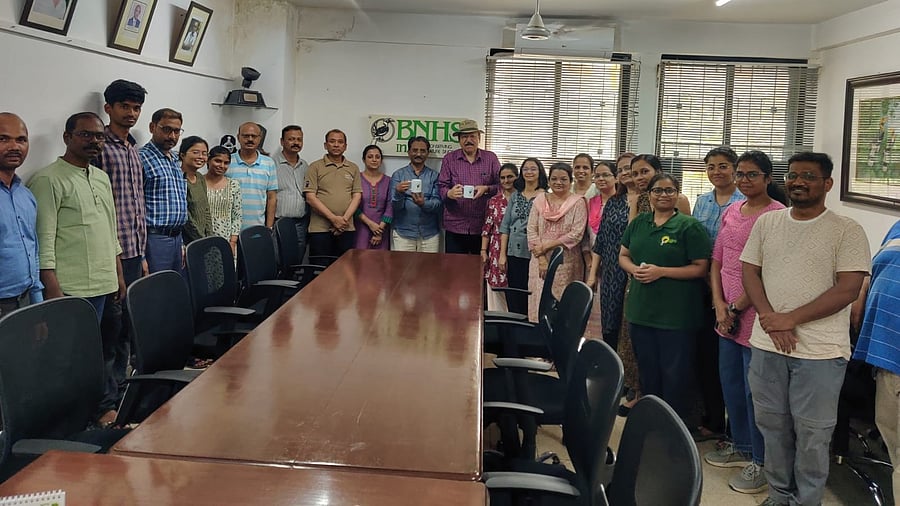
Members of BHNS in Hornbill House.
Credit: Special Arrangement
Mumbai: In 1883, eight nature-loving residents of what was then Bombay decided to exchange notes and exhibit interesting specimens of natural history.
The legends - Dr D MacDonald, E H Aitken, Col C Swinhoe, J C Anderson, J Johnston, Dr Atmaram Pandurang, Dr G A Maconochie and Dr Sakharam Arjun - came together at the Victoria and Albert Museum on September 15 and constituted the Bombay Natural History Society (BNHS).
BNHS, currently housed at Hornbill House, is now 142 years old and the oldest NGO of India.
The iconic Hornbill House is located at the Shahid Bhagat Singh Rd, opposite the Lion Gate, at Kala Ghoda in the Fort area of Mumbai.
In the neighbourhood is the Prince of Wales Museum, now known as the Chhatrapati Shivaji Maharaj Vastu Sangrahalaya.
The Victoria and Albert Museum is now known as Dr Bhau Daji Lad Museum, situated next to the Veermata Jijabai Bhosale Udyan-Zoo in Byculla.
The BNHS founders proposed to meet monthly and exchange notes, exhibit interesting specimens and otherwise encourage one another.
For several months, meetings were held in the Victoria and Albert Museum. Then in January 1884, HM Phipson offered the use of a room in his office at 18 Forbes Street, Fort, Bombay, for holding meetings.
Soon the membership increased and collections began to be made. In a very short time, the necessity for more ample accommodation was felt. However, Phipson again came to the rescue of the Society and both his office and the BNHS moved to a larger and more suitable accommodation at 6, Apollo Street, (later to be renumbered 114). This association was to last for the next 74 years.
Exactly 60 years ago, 13 February, 1965, the BNHS had its new address, Hornbill House, formally inaugurated by MC Chagla, the then Union Education Minister.
The legendary ornithologist, late Dr Salim Ali, the then BNHS Vice President, delivered the welcome address at the event where Karl Khandalawala represented the trustees of Prince of Wales Museum.
“The Hornbill House is a unique building,” said Kishor Rithe, Director, BNHS on Thursday.
The day was celebrated by the BNHS staff members in the presence of Rithe and Dr Asad Rahmani, former Director, BNHS.
The BNHS has a unique Natural History Collection, which is an invaluable treasure trove of natural history specimens collected from across the Indian subcontinent and beyond.
Over 1,50,000 specimens of fauna across various taxa are preserved here. The collection is even older than BNHS and has made tremendous contributions towards conserving the biodiversity of the Indian subcontinent. In fact, the Hornbill House was built to store the specimens of the collection - which included mammal, bird, bird egg, reptile, amphibian, fish and insects.
Species you might never see again in our country’s wilderness, like the pink-headed duck and Asiatic cheetah, have their taxidermied specimens as part of the Collection. The specimens are not only valued for their historical significance but also are vital research material for wildlife science researchers and academicians in the present day.
The BNHS Library is one of the oldest and largest libraries in India dedicated to natural history. It is a source of information on various subjects such as wildlife, ecology, zoology, botany and environment conservation.
It has a priceless collection of antique books and rare lithographs from the nineteenth and twentieth centuries, many not available elsewhere. The library houses valuable photo-negatives and transparencies, particularly those of E P Gee, Loke Wan Tho, RSP Bates, M Krishna and Dr Sálim Ali, and those generated through various scientific projects of the BNHS.